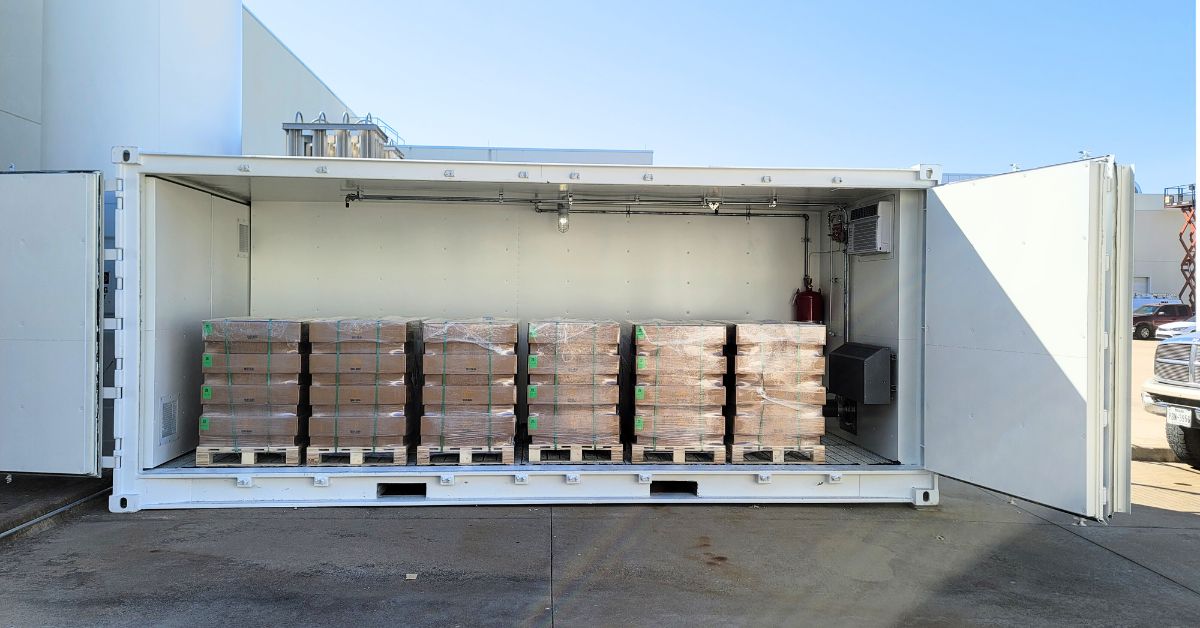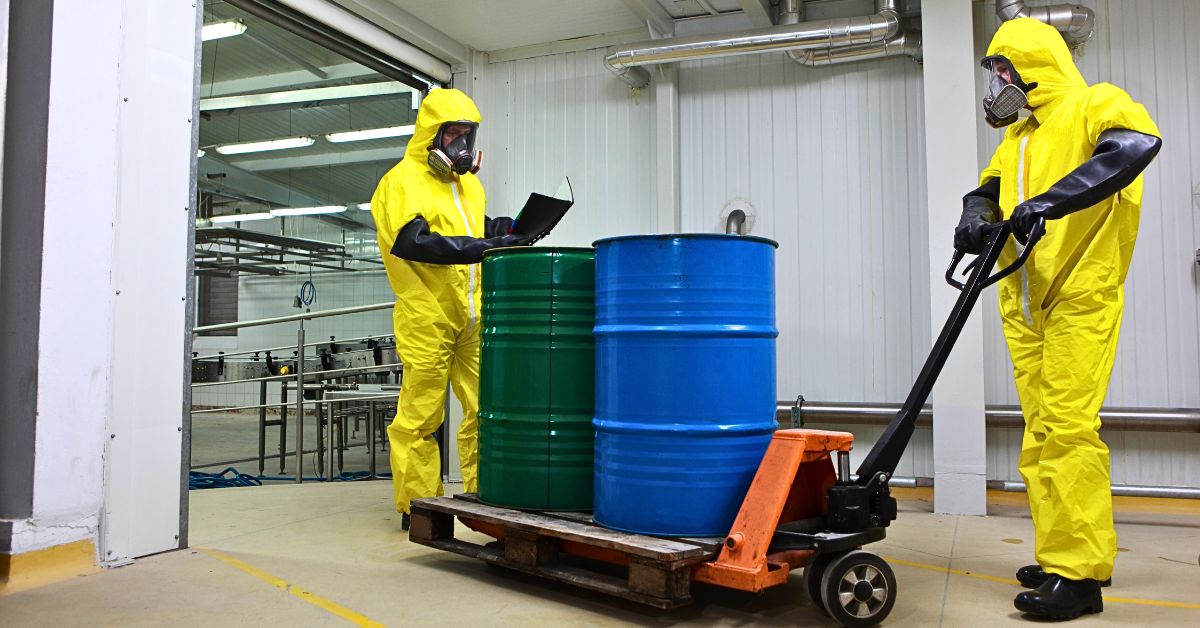
Chemical co-storage involves storing multiple chemical substances in close proximity within a storage facility. Its purpose is to ensure chemicals are stored in a manner that minimizes the risk of hazardous reactions, spills, or other safety incidents. Industries that handle various chemicals must prioritize safe co-storage to protect personnel, property, and the environment. Use this guide to safe chemical co-storage practices to mitigate hazards at your facility.
Segregate Chemicals Based on Compatibility
Storing incompatible chemicals together can lead to dangerous reactions, including fires, explosions, or toxic gas releases. Grouping chemicals according to their reactive properties minimizes the risk of unintended interactions.
You can categorize chemicals into broad groups, such as acids, bases, flammables, and oxidizers. Within these groups, chemicals may require further segregation based on specific reactivity information. Always refer to the safety data sheets (SDS) for detailed compatibility guidelines.
Where To Find the SDS
Safety data sheets for chemicals can typically be found on the websites of chemical manufacturers, distributors, or suppliers. Manufacturers and suppliers often provide them along with the purchased chemical product, or the purchaser can request the SDS from the supplier directly. Additionally, many regulatory agencies and organizations maintain online databases where you can access the SDS for various chemicals for reference and safety information.

Label Containers Clearly
Proper labeling is a crucial practice for the safe storage and handling of chemicals. Each container should be clearly labeled with the chemical name, associated hazards, and handling instructions. Using standardized labeling systems, like the Globally Harmonized System (GHS), enhances clarity and compliance with regulations.
The GHS provides guidance on these key components to effectively communicate chemical hazards:
- Classification criteria: GHS provides standardized criteria for classifying chemical hazards based on their environmental, physical, and health properties.
- Label elements: GHS requires specific label elements on chemical containers, including pictograms, signal words (e.g., “Danger” or “Warning”), hazard statements, and precautionary statements, to communicate the hazards associated with the chemicals.
- Safety data sheets (SDS): GHS mandates the provision of safety data sheets that contain detailed information about the properties of chemicals, their hazards, safe handling practices, and emergency response procedures.
- Harmonization: GHS aims to harmonize the global classification and labeling of chemicals to ensure consistent communication of hazards, enhance worker safety, facilitate international trade, and promote understanding of chemical risks across different regions and countries.
Systematic labeling ensures that anyone handling or inspecting the container knows exactly what it contains and how to manage it safely. Your organization should use durable labels that resist environmental conditions such as moisture and temperature variations in the storage area.
Ensure Adequate Ventilation
Adequate ventilation is essential in chemical storage areas to disperse fumes and prevent the buildup of toxic or flammable vapors. Poor ventilation can lead to hazardous concentrations of chemicals in the air, posing significant health and safety risks. Implementing proper ventilation systems helps maintain a safe atmosphere and reduces the risk of inhalation hazards.
Regularly inspect and maintain ventilation systems to ensure they are functioning effectively. In some cases, local exhaust ventilation may be necessary to capture and remove fumes directly from the source.
Implement Spill Containment Measures
Spill containment helps prevent chemical spills from spreading, minimizing the risk of environmental contamination, personal injury, and property damage. Ensure that spill containment materials are readily accessible and train personnel on their proper use. Regularly check containment systems for signs of damage or degradation and replace them as needed to maintain their effectiveness.
The following spill containment measures prevent the spread of hazardous substances:
- Implementing secondary containment systems such as spill berms or containment pallets to confine spills within a designated area.
- Using absorbent materials like spill kits and absorbent pads to quickly contain and soak up spilled chemicals.
- Installing leak detection systems to promptly identify potential leaks.
- Regular inspection and maintenance of storage tanks, pipelines, and equipment to prevent leaks and ensure containment integrity.
- Training employees on proper spill response procedures, including containment protocols, use of personal protective equipment (PPE), and reporting requirements.
- Establishing clear spill response protocols and designated spill response teams to efficiently manage and contain spills in accordance with safety guidelines and regulations.
Store Flammable Chemicals Safely
Flammable chemicals require special attention to prevent fires and explosions. Store these substances away from ignition sources, such as open flames, electrical equipment, and hot surfaces. Employers should provide fire extinguishers and other fire suppression equipment in easily accessible locations within the storage area. Train personnel on how to use this equipment and conduct regular fire drills to ensure everyone knows how to respond in case of an emergency.
Using flame-resistant storage cabinets and containers further enhances safety. For example, compliant flammable paint storage containers meet regulatory requirements established by OSHA, the National Fire Protection Association (NFPA), and your facility’s local municipality authority. Robust construction, fire suppression systems, and mechanical ventilation in these specialized containers work to prevent the ignition of flammable paints by providing a secure, fire-resistant enclosure that limits oxygen exposure and contains potential vapors.

Require Personal Protective Equipment (PPE)
Personal protective equipment (PPE) safeguards workers who handle or are exposed to chemicals. Depending on the hazards associated with the chemicals, PPE may include gloves, goggles, masks, face shields, and protective clothing. To determine the specific type of PPE required for handling a chemical, refer to the safety data sheet (SDS) provided by the manufacturer or supplier.
Ensure that PPE is readily available, properly maintained, and replaced when necessary. Additionally, provide training on the correct selection, use, and disposal of PPE to ensure its effectiveness.
Provide Training on Safe Handling Procedures
Effective training is vital for ensuring that all personnel understand safe handling procedures and emergency protocols. Regular training sessions should cover proper storage practices, safe handling techniques, and how to respond to chemical spills or leaks.
Training should be ongoing, with periodic refreshers to keep knowledge up to date. Incorporate practical exercises and simulations to reinforce learning and build confidence in handling real-life scenarios. Well-trained employees are better equipped to handle chemicals safely and respond effectively to emergencies.
Conduct Regular Inspections
Routine inspections of chemical storage areas help identify potential safety concerns and prompt corrective action. Regular inspections also provide an opportunity to reinforce safety protocols and remind personnel of the importance of maintaining a safe storage environment. Look for signs of leaks, damaged containers, improper labeling, and other hazards.
Conducting regular inspections ensures that storage practices remain compliant with safety standards and regulations. Document each inspection and address any identified issues promptly.
Have an Emergency Response Plan
An effective emergency response plan manages risks associated with chemical spills, leaks, and other emergencies. The plan should outline clear procedures for evacuating the area, containing the spill, and notifying relevant authorities. Having a well-defined plan ensures that everyone knows their roles and responsibilities during an emergency.
Conduct regular drills to practice the emergency response plan and ensure all personnel are familiar with it. Update the plan as needed to reflect changes in the storage area, the types of chemicals stored, or regulatory requirements.
For secure, shared chemical storage, sort chemicals based on their properties, label chemicals clearly, use appropriate fire protection, and ensure adequate ventilation. Spill containment measures, regular inspections, and thorough emergency response protocols further enhance preparedness. Finally, consistent inspections and robust training create a safer environment. Incorporate these strategies into your facility’s routine to practice responsible chemical management.